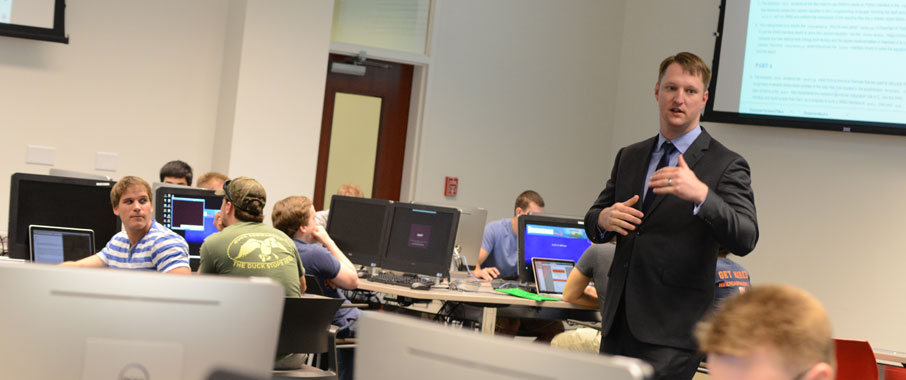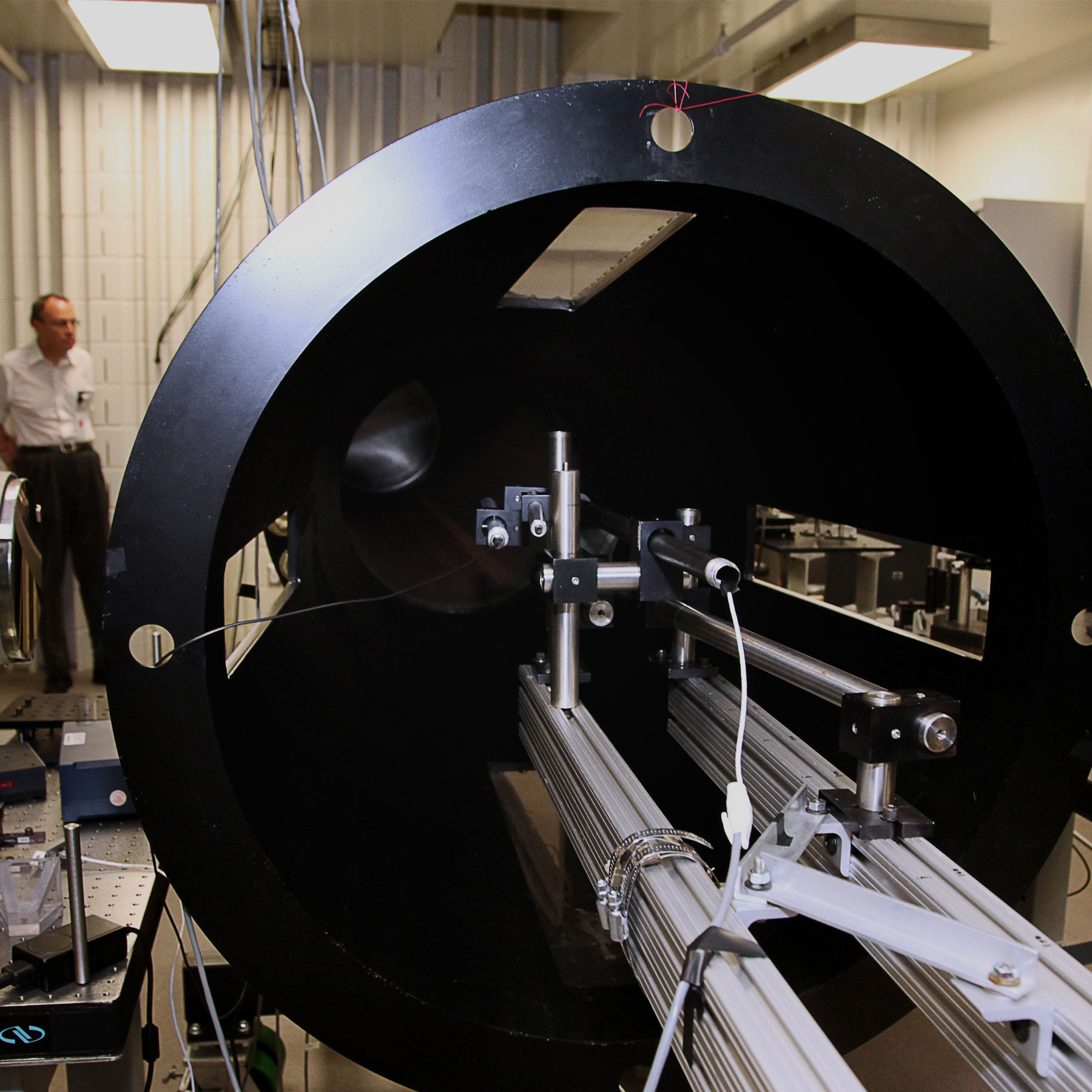


Engineers are not known for their fashion sense. My brother is a computer engineer and his casual jeans and T-shirt fashion is the kind of clothing I associate, maybe stereotypically, with engineers. When I met Dr. John Foster for the first time, I thought he looked liked he belonged in a men’s fashion magazine. A freshly pressed dress shirt underneath an immaculate suit, his shoes (and buttons) shining. He looked nothing like my code-writing, jean-wearing brother. Foster’s fashion sense is forward thinking, and so is his teaching style. This innovative professor is using a flipped classroom teaching method that maximizes Foster’s, and his students’, time.
“The idea of a flipped classroom is that all the traditional lecture material is covered outside of the scheduled class time,” said Foster, an assistant professor in the Department of Mechanical Engineering. “The difference is that what would typically be a 60-75 minute lecture is cut down to two or three 7-10 minute video lectures.”
Foster, who himself learned about the flipped classroom approach from educator Salman Khan and his Internet- based learning community Khan Academy, recorded two to three short video lessons per class period when he started teaching Introduction to High-Performance Computing in 2013.
“I did 500 percent work up front when I started teaching this flipped class,” he recalled. “But now, after three semesters of teaching the class, I am just tweaking the material, and it really helps with my workload at this point.”
Foster’s students are required to watch the videos and respond to quiz questions before they come into the classroom. The videos, which are located on a website specifically designed by Foster, are accompanied by slides and the students can stop, rewind and pause the videos if they need clarification on any of the topics shown.
“This class is perfect for a flipped model because the only way you can get better at programming is by actually writing code,” said Foster. “Students don’t get better at coding sitting and listening to someone talk about it. That is not effective at all. If I can deliver all the background material and all the reference material outside of class, then when they come to class, we can write programs together. That is how they get good at it.”
When the students come to class, they have to apply the concepts they learned in the videos to the class lesson. Foster gives them a problem in class, which in a typical class would have been given as homework. Instead of having the student struggle alone working on the assignment, Foster uses the class time to guide his students through the problem.
“They [the students] have figured out that if they come to class, they can get help and figure out a problem in the class period,” he said. “If they don’t come to class, they are going to get stuck and it could take them three to fours hours to get through the task.”
The amount of students taking the course since Foster started teaching it in 2012 has grown from an average of 20 students to 40 students. And the reviews Foster receives at the end of the semester are extremely positive.
“I thought the class style was very beneficial. I work while taking my courses and it made the lecture and homework time much more flexible,” said Jason Crandall, a senior Mechanical Engineering major who took Foster’s class last semester. “I could retain a lot more of the information since it was completely at my pace.”
Crandall said that he thinks the flipped classroom is a much better way to learn because the method gets the students more involved with the professor when they are in the classroom. In a lecture setting, Crandall said he feels the professor just talks to the students with little interaction.
“I find that a lot of times lectures don’t leave room for real-world questions and experiences,” said Crandall. “When the class is reversed as Dr. Foster’s was, the time that would be a lecture provided the perfect opportunity for questions since we already had the basics; it let me get a lot deeper into the subject matter.”
Nathan Crosby, a graduate student in Mechanical Engineering, is taking High Performance Computing class this spring 2014 semester and is also a fan of the flipped method.
“With the flipped classroom approach, I won’t waste a lot of time looking for the wrong answer if I get on the wrong track,” said Crosby. “After that first run-through, I’ll have a working example I went through step-by-step to reference, and an understanding of anything that gave me trouble before.”
And Foster’s UTSA students aren’t the only ones benefiting from the course material. Foster has posted the videos to YouTube, and over the past year and a half, the videos have been viewed 60,000 times, with only 9,000 of those hits coming from the class website http://idl.utsa.edu/me5013.
“As an unintended consequence of putting this course online, I have garnered a reputation in this area,” said Foster. “I have gotten emails from people all over the world asking me questions and wanting to collaborate on projects.”
High-Performance Computing is the only class Foster is currently teaching with a fully flipped model, and he says that the material lends itself to this approach.
“I would encourage every professor to do something different and take advantage of the technology we have,” said Foster. “It doesn’t have to exactly mimic what I am doing. Heck, I borrowed a lot of what am using from this guy Khan. I learned from him, and am not reinventing the Internet. I am just innovating and figuring out how I can use technology to my –and my students’ – advantage.”
—Deborah Silliman Wolfe